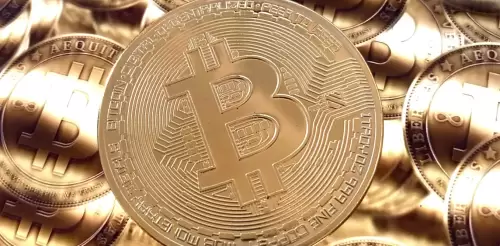 |
|
 |
|
 |
|
 |
|
 |
|
 |
|
 |
|
 |
|
 |
|
 |
|
 |
|
 |
|
 |
|
 |
|
 |
|
Cryptocurrency News Articles
ETH, Crypto, and the Validator Upgrade: Wall Street's New Darling?
Jun 30, 2025 at 07:46 am
Ethereum's validator upgrade, powered by Distributed Validator Technology (DVT), is transforming ETH into Wall Street's favorite programmable asset, boosting security and attracting institutional investment.

ETH, Crypto, and the Validator Upgrade: Wall Street's New Darling?
Ethereum is making waves, not just in the crypto world, but on Wall Street too! A quiet revolution is underway with its validator architecture, and it's attracting major attention.
The Silent Revolution: Distributed Validator Technology (DVT)
At the heart of this transformation is Distributed Validator Technology, or DVT. Imagine splitting Ethereum validators across multiple operators and machines. That's DVT! It makes the whole system more resilient, secure, and decentralized. Leading the charge is Obol Labs, whose technology addresses the long-standing problem of single points of failure in Ethereum staking. Forget about validators being penalized for a single node going offline. DVT ensures validators keep running smoothly, no matter what.
Why This Matters to Wall Street
This isn't just a tech upgrade; it's an institutional necessity. As Ethereum attracts inflows from ETFs, funds, and structured finance products, the staking infrastructure needs to meet traditional capital allocator standards. Blockdaemon, a big name in institutional crypto, is already integrating Obol's DVT. Anthony Bertolino, head of ecosystem at Obol Labs, puts it perfectly: institutions no longer have to choose between performance and security – they get both.
Lido's Leading the Way
Even Lido, Ethereum's largest staking protocol, is getting in on the action. They're preparing to approve DVT use across their "Curated Set" of professional node operators, who manage a significant chunk of all staked ETH. Their Simple DVT Module has already deployed thousands of DVT-powered validators with impressive effectiveness scores. These clusters are showing better uptime and higher effectiveness, making Ethereum staking enterprise-grade.
Beyond Tech: Decentralization and Security
DVT addresses a core criticism of Ethereum: increasing centralization of its staking layer. It helps fulfill the vision of Ethereum as neutral, distributed infrastructure. Institutions care about securing assets and generating attractive yields, and DVT delivers on both fronts.
Ethereum's Growing Appeal as a Treasury Asset
Adding fuel to the fire, major players are significantly increasing their ETH holdings. SharpLink Gaming, along with a prominent whale, acquired a massive amount of ETH, signaling strong institutional confidence. This move underscores Ethereum’s growing appeal as a treasury asset, positioning it alongside Bitcoin in diversified portfolios.
Binance Adjusts Collateral Rates
In related news, Binance is set to revise collateral rates for key digital assets, including ETH. This adjustment aims to balance leverage and liquidity, impacting trading strategies across the platform. These changes are crucial for maintaining market stability and managing systemic risk effectively, highlighting the evolving nature of risk controls in the crypto space.
The Future Looks Bright (and Decentralized)
All this activity points to a clear trend: Ethereum is maturing and becoming increasingly attractive to both institutions and everyday investors. With enhanced security, improved decentralization, and growing institutional adoption, ETH is solidifying its position as a leading player in the crypto world.
So, what's next? Keep an eye on DVT adoption, institutional investments, and regulatory developments. It's an exciting time to be involved in the ETH and crypto space! Who knows, maybe Ethereum will be the new black on Wall Street.
Disclaimer:info@kdj.com
The information provided is not trading advice. kdj.com does not assume any responsibility for any investments made based on the information provided in this article. Cryptocurrencies are highly volatile and it is highly recommended that you invest with caution after thorough research!
If you believe that the content used on this website infringes your copyright, please contact us immediately (info@kdj.com) and we will delete it promptly.
-

-

-

-

-

-

-

-

-

- Decoding Bitcoin and Cryptocurrency Tax Returns: A NYC Perspective
- Jun 30, 2025 at 01:32 pm
- Navigating the complex world of Bitcoin, cryptocurrency, and tax returns can be daunting. This article breaks down the key considerations for investors, from understanding capital gains to staying ahead of market trends.





























































